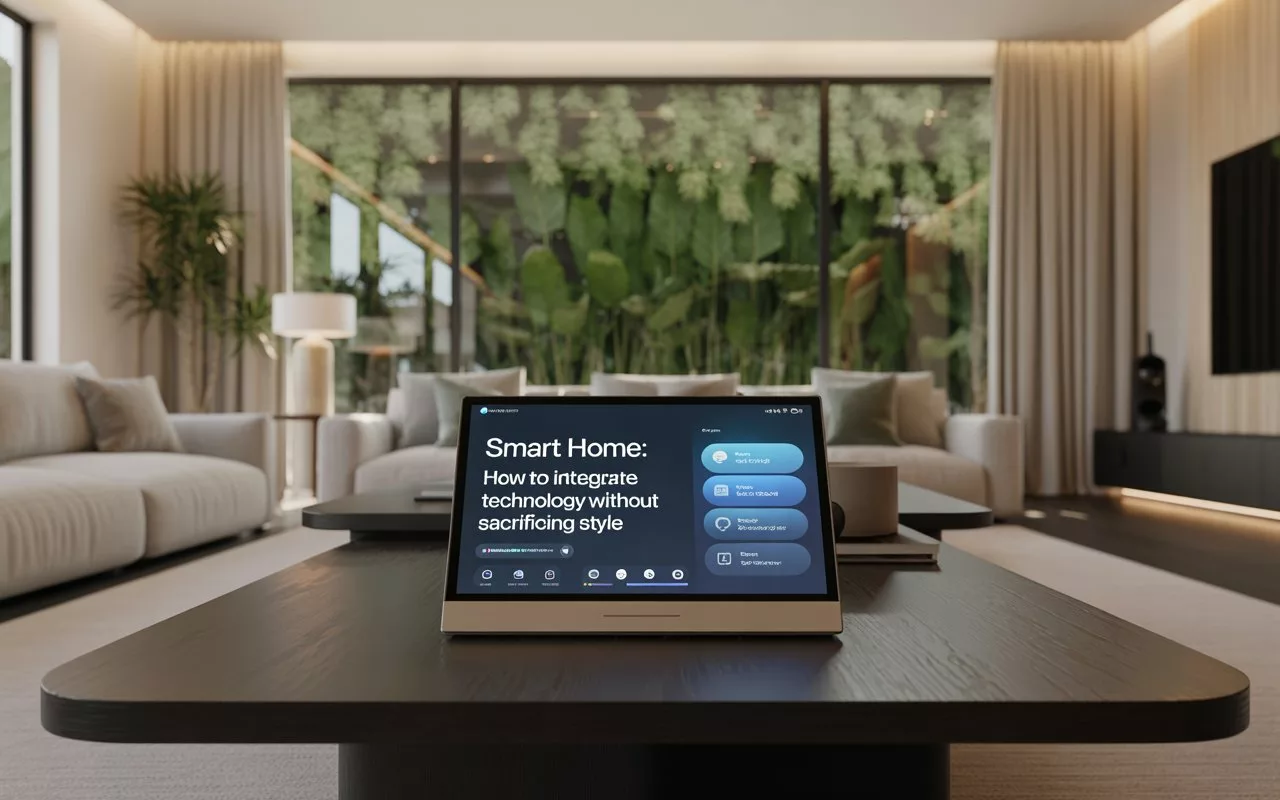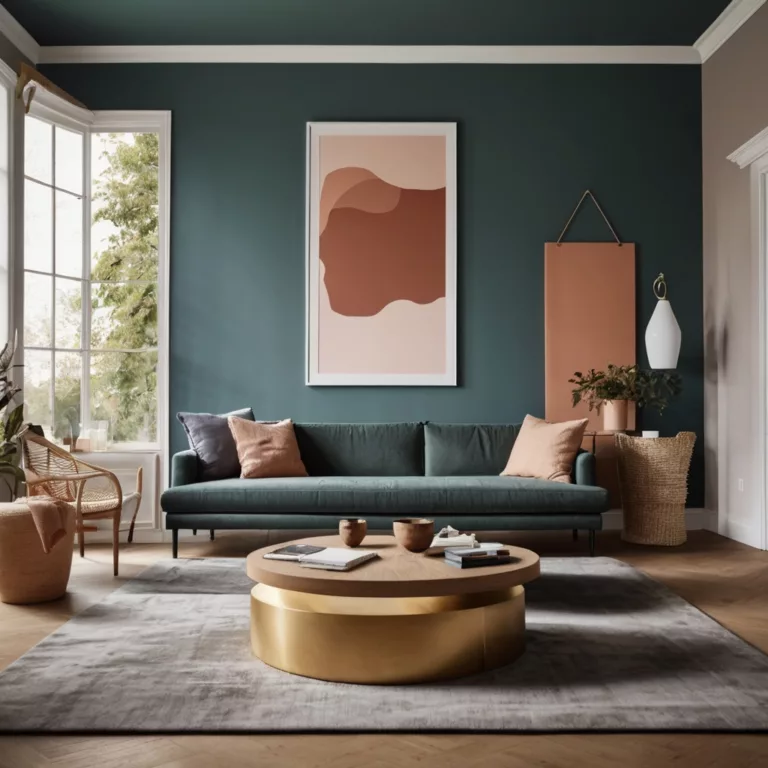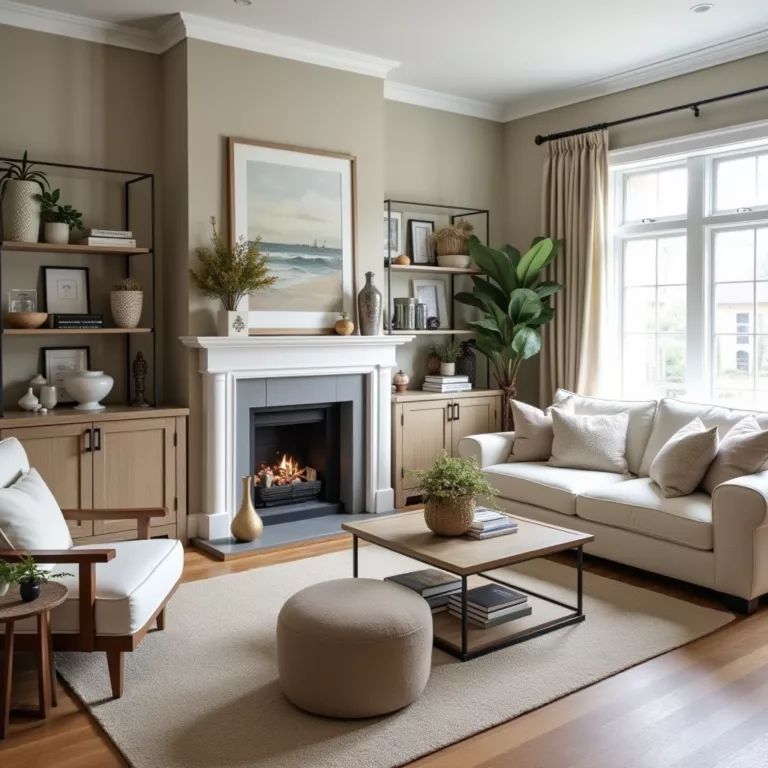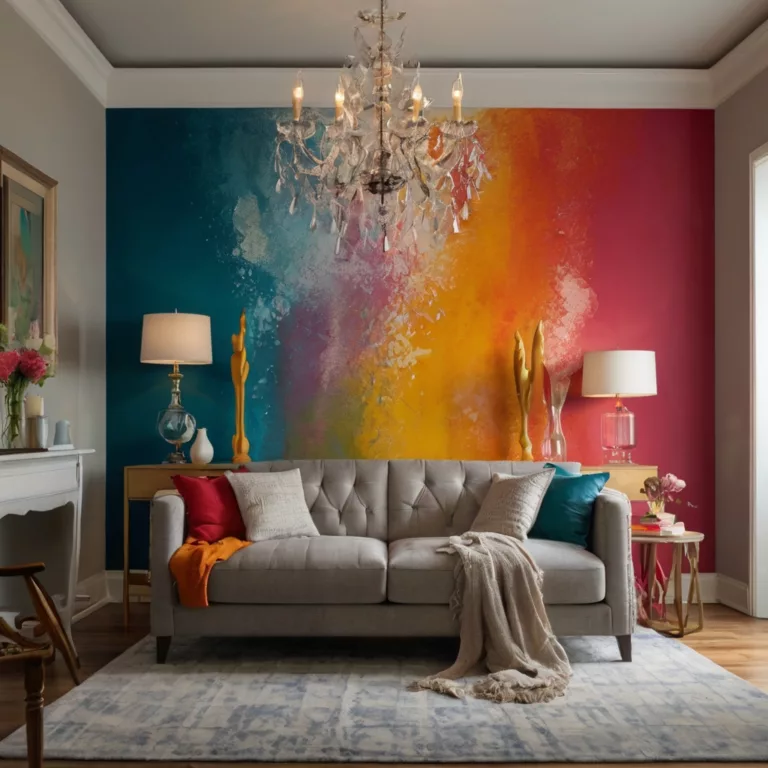
Table of Contents
- Introduction: The Evolution of Smart Home Design
- Understanding Smart Home Integration Principles
- Key Technologies for Stylish Smart Homes
- Design Strategies for Seamless Integration
- Room-by-Room Smart Home Implementation
- Luxury Smart Home Features
- Future Trends in Smart Home Design
- Common Integration Challenges and Solutions
- Budget-Conscious Smart Home Styling
- Professional vs. DIY Smart Home Installation
- Maintenance and Upgrades
- Conclusion
Introduction: The Evolution of Smart Home Design introduction
The modern smart home represents a remarkable fusion of cutting-edge technology and sophisticated design aesthetics. In today’s interconnected world, homeowners no longer need to choose between functionality and style when creating their ideal living spaces.
The smart home revolution has transformed how we interact with our living environments. From voice-controlled lighting systems to automated climate control, technology has become an integral part of contemporary home design. However, the challenge lies in seamlessly integrating these advanced systems without compromising the visual appeal and elegance of interior spaces.
Smart home technology has evolved significantly over the past decade. What once required bulky, unsightly equipment now operates through sleek, minimalist devices that complement modern interior design themes. Matter, the new universal smart home standard, will continue to gain traction, ensuring better compatibility between smart home devices regardless of brand, making integration more seamless than ever before.
The key to successful smart home integration lies in understanding that technology should enhance, not dominate, your living space. The most sophisticated smart homes are those where advanced functionality exists harmoniously with beautiful design elements, creating environments that are both intelligent and aesthetically pleasing.
Understanding Smart Home Integration Principles understanding-principles
Smart home integration is fundamentally about creating a cohesive ecosystem where technology serves your lifestyle while maintaining design integrity. The principles that guide successful integration focus on three core elements: functionality, aesthetics, and user experience.
The foundation of any well-designed smart home begins with understanding your daily routines and lifestyle preferences. Technology should adapt to your needs, not the other way around. This human-centered approach ensures that every smart device and system serves a specific purpose in enhancing your quality of life.
Aesthetic integration requires careful consideration of how technological components blend with existing interior design elements. Smart home integration is no longer just about convenience—it’s about creating a seamless living experience where technology enhances daily life without disrupting the aesthetic harmony of your space.
The user experience principle emphasizes intuitive control systems that feel natural and effortless. The best smart home implementations are those where technology becomes invisible, operating seamlessly in the background while providing maximum benefit to residents.
Key Technologies for Stylish Smart Homes key-technologies
Modern smart home technology encompasses a wide range of sophisticated systems designed to enhance comfort, security, and efficiency while maintaining elegant aesthetics. Understanding these key technologies helps homeowners make informed decisions about integration strategies.
Intelligent Lighting Systems
Smart lighting represents one of the most transformative technologies for modern homes. Advanced LED systems offer unprecedented control over ambiance, energy efficiency, and aesthetic appeal. These systems can automatically adjust color temperature throughout the day, mimicking natural light patterns to support circadian rhythms.
Integrated lighting solutions include recessed fixtures, architectural lighting strips, and wireless smart bulbs that disappear into the ceiling and walls. The most sophisticated systems respond to occupancy, daylight levels, and personal preferences without requiring manual intervention.
Climate Control Innovation
Smart thermostats and HVAC systems provide precise environmental control while maintaining visual discretion. Modern systems feature sleek, minimalist interfaces that complement contemporary interior design schemes. These devices learn user preferences and automatically optimize temperature and humidity levels for maximum comfort and energy efficiency.
Zoned climate control allows different areas of the home to maintain independent temperature settings, ensuring optimal comfort in every room while maximizing energy efficiency.
Advanced Security Integration
Contemporary security systems blend sophisticated protection capabilities with elegant design aesthetics. Smart cameras, doorbell systems, and access control devices now feature compact, attractive housings that integrate seamlessly with architectural elements.
Biometric access control, smart locks, and integrated alarm systems provide comprehensive security while maintaining the visual appeal of entry points and interior spaces.
Home Entertainment Evolution
The global smart home market is expected to reach $135 billion by 2025, driven by increased connectivity, AI integration, and sustainable solutions. Entertainment systems represent a significant portion of this growth, with wireless speakers, hidden projectors, and integrated display technologies transforming how we experience media at home.
Distributed audio systems allow music to follow you throughout the home, while motorized screens and projectors can appear and disappear as needed, maintaining clean sight lines when not in use.
Design Strategies for Seamless Integration design-strategies
Creating a stylish smart home requires strategic planning and thoughtful implementation of design principles that prioritize both functionality and aesthetics. The most successful integrations are those that feel natural and unobtrusive.
Concealment and Minimalism
The art of hiding technology while maintaining accessibility is fundamental to elegant smart home design. Custom cabinetry, built-in solutions, and architectural integration allow devices to disappear when not needed while remaining instantly accessible.
Wireless technologies eliminate the need for visible cables and connections, creating cleaner, more sophisticated interior spaces. Power over Ethernet (PoE) systems can provide both power and data through single cables, further reducing visual clutter.
Material Harmony
Selecting smart devices that complement existing materials and finishes ensures cohesive design integration. Premium manufacturers now offer customizable faceplates, housing materials, and color options that coordinate with interior design schemes.
Natural materials like wood, stone, and metal can be incorporated into smart device housings and mounting systems, creating seamless transitions between technology and traditional design elements.
Color Coordination
Modern smart devices are available in a wide range of finishes and colors, allowing for precise coordination with existing interior color palettes. Neutral tones and metallic finishes provide versatility and longevity, while custom powder coating options enable perfect color matching.
Architectural Integration
The most sophisticated smart home installations incorporate technology directly into architectural elements. Custom millwork, integrated mounting systems, and purpose-built alcoves create seamless integration that enhances rather than detracts from interior design.
Room-by-Room Smart Home Implementation room-by-room
Successful smart home integration requires a thoughtful, room-by-room approach that considers the unique functions and design requirements of each space. Each area of the home presents distinct opportunities and challenges for technology integration.
Living Room Sophistication
The living room serves as the heart of most homes and requires the most careful balance between technology and style. Entertainment systems, lighting control, and climate management must work harmoniously to create inviting, comfortable spaces.
Integrated surround sound systems can be completely hidden within walls and ceilings, providing exceptional audio quality without visible speakers. Motorized artwork can conceal large displays when not in use, maintaining the room’s aesthetic integrity.
Smart lighting systems in living areas should offer multiple scenes and presets that accommodate various activities, from intimate conversations to entertaining guests. Automated window treatments provide privacy and light control while contributing to the room’s overall design scheme.
Kitchen Innovation Hub
Modern smart kitchens combine culinary functionality with technological sophistication. Connected appliances, integrated displays, and intelligent storage solutions transform cooking and dining experiences.
Smart refrigerators with internal cameras and inventory management systems blend seamlessly with high-end cabinetry. Induction cooktops with integrated ventilation systems maintain clean lines while providing professional-grade cooking capabilities.
Voice control systems in kitchens must be carefully positioned to ensure reliable performance in environments with noise and steam. Integrated displays can provide recipe information, weather updates, and home control interfaces without cluttering counter space.
Bedroom Sanctuary Design
Bedroom smart home integration focuses on creating restful, rejuvenating environments that support healthy sleep patterns and personal comfort. Automated systems should operate silently and unobtrusively.
Circadian lighting systems automatically adjust color temperature and intensity throughout the day, supporting natural sleep-wake cycles. Blackout motorized shades provide complete darkness for optimal sleep quality.
Climate control systems in bedrooms should maintain precise temperature and humidity levels while operating virtually silently. Smart mattresses and sleep tracking systems provide valuable health insights without compromising comfort or aesthetics.
Bathroom Luxury Integration
Smart bathroom technologies focus on comfort, efficiency, and hygiene while maintaining spa-like aesthetics. Heated floors, smart mirrors, and automated fixtures create luxurious experiences.
Digital shower systems provide precise temperature and flow control with elegant, minimalist interfaces. Smart toilets offer advanced hygiene features while maintaining sophisticated design aesthetics.
Integrated medicine cabinets with LED lighting and climate control protect medications while providing convenient storage and organization.
Luxury Smart Home Features luxury-features
Integrated systems have become the cornerstone of luxury living, seamlessly blending smart home technology with elegant design. High-end smart homes incorporate premium technologies that provide exceptional performance while maintaining uncompromising aesthetic standards.
Premium Material Integration
Luxury smart homes utilize the finest materials and finishes to ensure technology integration meets the highest aesthetic standards. Custom metalwork, exotic woods, and premium stone materials create distinctive, personalized environments.
Smart home control interfaces crafted from materials like brushed aluminum, solid wood, or natural stone provide tactile experiences that complement high-end interior design themes.
Advanced Automation Systems
Sophisticated automation systems in luxury homes anticipate user needs and respond proactively to changing conditions. Machine learning algorithms adapt to resident preferences over time, creating increasingly personalized experiences.
Whole-home automation systems integrate lighting, climate, security, entertainment, and other systems through unified control platforms that provide intuitive operation from any device or location.
Artisanal Technology Integration
The most exclusive smart homes feature custom-designed technology solutions created by skilled artisans and craftspeople. Hand-forged metal housings, custom woodwork, and bespoke control interfaces create unique, one-of-a-kind installations.
These artisanal approaches to technology integration ensure that smart home systems become integral parts of the home’s artistic expression rather than mere functional additions.
Professional-Grade Performance
High-end smart home technology integrates advanced systems to create a seamless living experience. It incorporates sophisticated air conditioning controls, customized bedroom environments, and daylight-responsive lighting.
Luxury smart homes feature commercial-grade infrastructure and professional-level performance capabilities that exceed residential standards. Dedicated network infrastructure, redundant systems, and enterprise-grade security ensure reliable, high-performance operation.
Future Trends in Smart Home Design future-trends
The future of smart home design promises even greater integration between technology and aesthetics, with emerging trends focusing on sustainability, artificial intelligence, and biophilic design principles.
Artificial Intelligence Integration
AI-powered smart home systems will become increasingly sophisticated, learning from user behavior and environmental conditions to optimize performance automatically. These systems will anticipate needs and respond proactively, creating more intuitive and effortless user experiences.
Predictive analytics will enable smart homes to adjust systems based on weather forecasts, occupancy patterns, and energy pricing, optimizing efficiency while maintaining comfort.
Sustainable Technology Solutions
Environmental consciousness drives innovation in smart home technology, with new solutions focusing on energy efficiency, renewable energy integration, and sustainable materials.
Solar integration, battery storage systems, and smart grid connectivity will become standard features in premium smart homes, providing energy independence while reducing environmental impact.
Health and Wellness Focus
Today’s homeowners seek spaces that are not only aesthetically pleasing but also practical, reflecting a deeper understanding of how our environments can enhance our quality of life.
Future smart homes will incorporate advanced health monitoring systems, air purification technologies, and circadian lighting systems that actively support resident health and wellbeing.
Biophilic Design Integration
The integration of natural elements with smart home technology creates environments that connect residents with nature while providing modern conveniences. Living walls, integrated water features, and natural material applications will become increasingly common.
Common Integration Challenges and Solutions challenges-solutions
Smart home integration projects often encounter specific challenges that require creative solutions to maintain both functionality and aesthetic appeal. Understanding these common issues helps homeowners and designers prepare for successful implementations.
Wireless Connectivity Issues
Reliable wireless connectivity throughout large homes requires careful planning and often multiple access points or mesh network systems. Signal strength, interference, and dead zones must be addressed during the design phase.
Professional site surveys and network design ensure comprehensive coverage while minimizing visible equipment. Strategic placement of access points and signal boosters maintains strong connectivity without compromising interior design.
Device Compatibility Concerns
With numerous manufacturers and communication protocols, ensuring device compatibility can be challenging. Matter ensures devices from various manufacturers can communicate effortlessly, providing homeowners with a unified and intuitive experience.
Selecting systems that support universal standards and working with experienced integrators helps avoid compatibility issues and ensures long-term system reliability.
Aesthetic Compromise Solutions
Balancing technological capability with design preferences requires creative problem-solving and often custom solutions. Standard off-the-shelf devices may not meet aesthetic requirements for high-end installations.
Custom housings, architectural integration, and carefully planned concealment strategies ensure that technology enhances rather than detracts from interior design goals.
User Interface Complexity
Smart home systems can become overwhelming if not properly designed and programmed. Complex control interfaces and numerous options can frustrate users and reduce system adoption.
Simplified control schemes, intuitive interfaces, and comprehensive user training ensure that smart home systems remain accessible and enjoyable for all residents.
Budget-Conscious Smart Home Styling budget-conscious
Creating an elegant smart home doesn’t require unlimited resources. Strategic planning, phased implementation, and careful product selection can achieve impressive results within reasonable budgets.
Phased Implementation Strategy
Smart home integration can be accomplished gradually, starting with core systems and expanding over time. This approach spreads costs while allowing homeowners to experience benefits immediately and learn about their preferences.
Beginning with lighting and climate control systems provides immediate comfort and efficiency benefits while establishing the foundation for future additions.
Value-Oriented Product Selection
Many manufacturers offer attractive, well-designed smart devices at various price points. Research and comparison shopping can identify products that provide excellent value while meeting aesthetic requirements.
Focusing on devices with strong reviews, good support, and upgrade paths ensures long-term satisfaction while minimizing replacement costs.
DIY-Friendly Solutions
Some smart home technologies are well-suited to do-it-yourself installation, reducing professional labor costs. Wireless devices, plug-and-play systems, and user-friendly configuration tools make self-installation feasible for many homeowners.
However, complex systems, electrical work, and structural modifications should always involve qualified professionals to ensure safety and proper operation.
Strategic Professional Consultation
Even budget-conscious projects benefit from professional consultation during planning phases. Experienced integrators can provide valuable guidance on product selection, system design, and installation priorities that maximize value and avoid costly mistakes.
Limited professional involvement during critical phases can significantly improve project outcomes while managing costs effectively.
Professional vs. DIY Smart Home Installation professional-vs-diy
The decision between professional installation and do-it-yourself implementation depends on system complexity, technical expertise, and aesthetic requirements. Each approach offers distinct advantages and considerations.
Professional Installation Benefits
Professional integrators bring extensive experience, specialized tools, and industry relationships that can significantly improve project outcomes. They understand system interactions, troubleshooting procedures, and aesthetic integration techniques.
Our integrators will personalize your system, automations, and scenes, ensuring that smart home installations are tailored to specific user needs and preferences.
Custom programming, advanced automation setup, and comprehensive testing ensure reliable operation and optimal performance. Professional installations typically include warranties and ongoing support services.
DIY Implementation Advantages
Self-installation provides complete control over timing, pace, and specific product choices. Technology-savvy homeowners can often achieve excellent results while saving significant labor costs.
Modern smart home devices increasingly feature user-friendly installation procedures and comprehensive documentation. Many systems offer guided setup processes and customer support to assist DIY installers.
Hybrid Approaches
Many successful smart home projects combine professional and DIY elements, utilizing professional services for complex or critical systems while handling simpler components independently.
Professional consultation and system design combined with selective self-installation can provide excellent results while managing costs effectively.
Safety and Code Considerations
Electrical work, structural modifications, and complex network installations should always involve qualified professionals to ensure safety and code compliance. Licensed electricians and network specialists have the training and insurance necessary for these critical components.
Building permits and inspections may be required for certain smart home installations, particularly those involving electrical or structural work.
Maintenance and Upgrades maintenance-upgrades
Smart home systems require ongoing maintenance and periodic upgrades to ensure optimal performance and longevity. Planning for these requirements during initial installation helps maintain system reliability and user satisfaction.
Regular System Maintenance
Smart home systems benefit from regular maintenance schedules that include software updates, security patches, and performance monitoring. Many systems provide automated update capabilities, but manual review and testing ensure proper operation.
Network infrastructure, wireless devices, and control interfaces require periodic cleaning and inspection to maintain optimal performance and appearance.
Technology Refresh Planning
Rapid technology evolution means that smart home components will eventually require replacement or upgrading. Planning for these refresh cycles during initial system design helps ensure smooth transitions and continued compatibility.
Modular system architectures and standard communication protocols facilitate easier upgrades and component replacement over time.
Warranty and Support Services
Comprehensive warranty coverage and ongoing support services provide peace of mind and protect system investments. Understanding warranty terms, support procedures, and service availability helps maintain system reliability.
Professional integrators often provide ongoing maintenance services and priority support that can be valuable for complex installations.
Performance Optimization
Smart home systems can be continuously optimized based on usage patterns, seasonal changes, and evolving user preferences. Regular performance reviews and system tuning ensure maximum efficiency and user satisfaction.
Advanced systems provide analytics and reporting capabilities that help identify optimization opportunities and system improvements.
Conclusion
The smart home represents the perfect marriage of advanced technology and sophisticated design, creating living environments that enhance daily life while expressing personal style and aesthetic preferences. Success in smart home integration requires careful planning, thoughtful product selection, and skilled implementation that prioritizes both functionality and beauty.
The smart luxury home of today is not just a residence but an ecosystem of sophisticated, integrated technologies designed to enhance every aspect of your daily life. By understanding integration principles, utilizing appropriate technologies, and working with experienced professionals when necessary, homeowners can create intelligent environments that provide exceptional comfort, convenience, and aesthetic appeal.
The future of smart home design promises even greater integration between technology and interior design, with emerging trends focusing on sustainability, artificial intelligence, and health-conscious living. As these technologies continue to evolve, the possibilities for creating beautiful, intelligent homes will only expand.
Whether implementing a comprehensive smart home system or gradually adding intelligent features over time, the key to success lies in maintaining focus on how technology can enhance your lifestyle while complementing your personal design aesthetic. The best smart homes are those where advanced capability operates invisibly, providing exceptional experiences while maintaining the timeless appeal of beautiful interior design.
The investment in smart home technology pays dividends in comfort, efficiency, and property value, while the careful integration of these systems with elegant design creates living environments that are both functional and inspiring. As we continue to spend more time in our homes, the importance of creating spaces that are both intelligent and beautiful will only continue to grow.
External Resources
For more comprehensive information on smart home technologies and design integration, visit these authoritative resources:
- Smart Home Association – Industry standards and best practices
- Consumer Technology Association – Technology trends and market insights
- Home Automation & Networking Association – Professional installation resources
- CEDIA (Custom Electronic Design & Installation Association) – Professional integrator directory and certification programs
- Energy Star Smart Home Guide – Energy efficiency and sustainability information
Related Articles
- Sustainable Smart Home Technologies for Modern Living
- Luxury Home Automation Trends and Innovations
- Smart Home Security Integration Best Practices
- Energy-Efficient Smart Home Design Strategies
This article was created with comprehensive research from industry experts and current market analysis to provide accurate, up-to-date information on smart home design and integration strategies.







